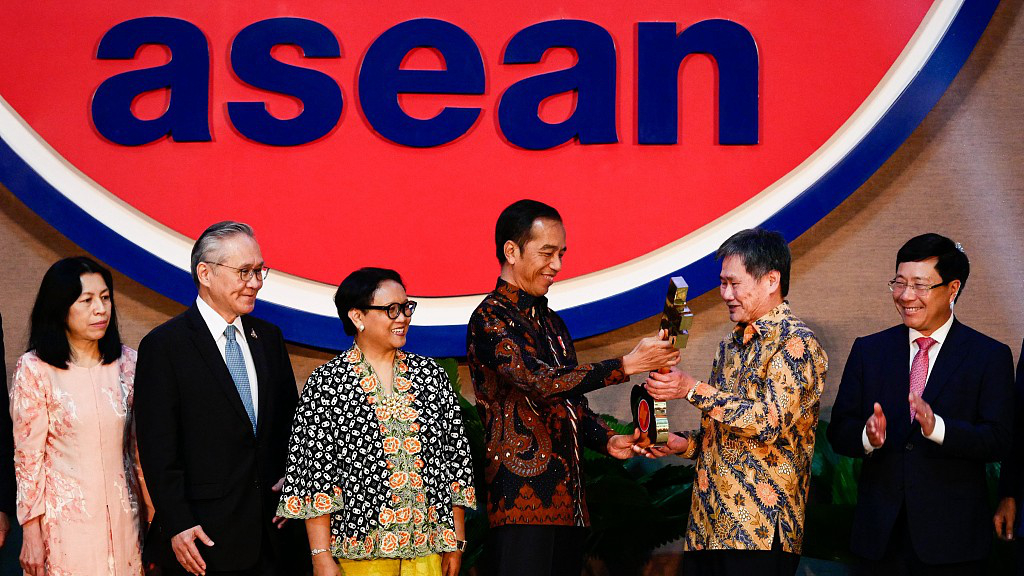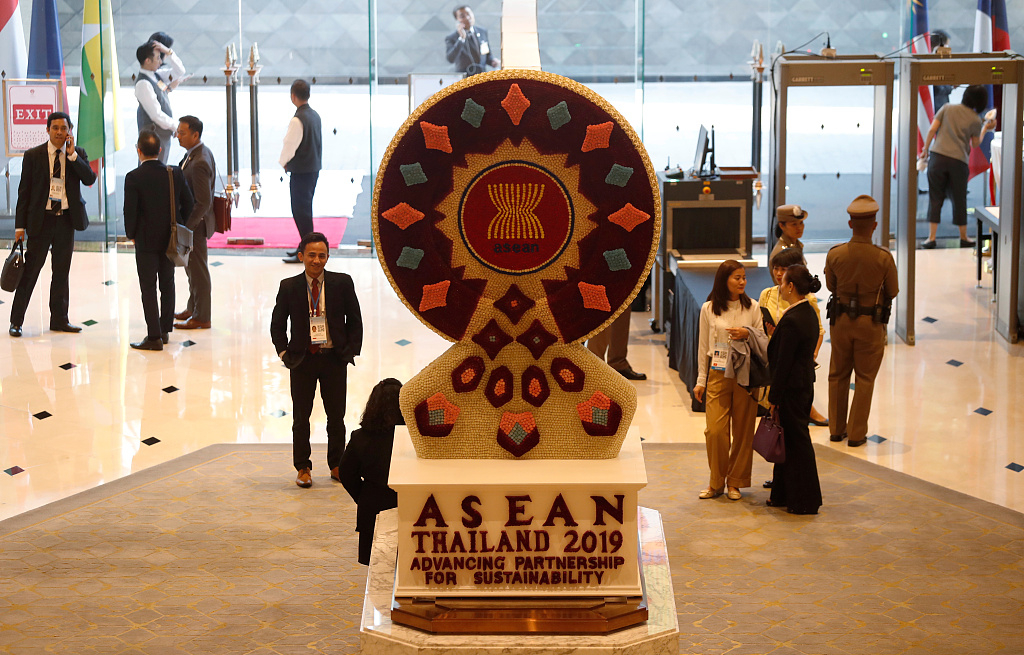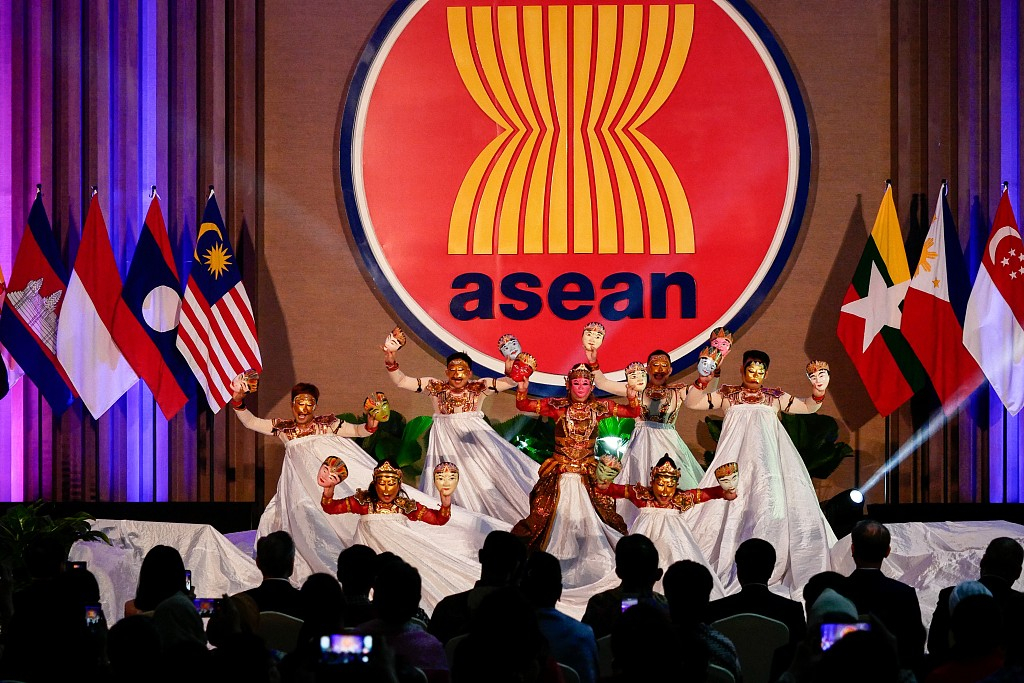

Editor's note: Richard Javad Heydarian is a specialist in Asian geopolitical and economic affairs, formerly a political science assistant professor, at De La Salle University and Ateneo De Manila University, the Philippines. He is the author of, among others, "The Indo-Pacific: Trump, China and the New Struggle for Global Mastery." The article reflects the author's opinion and not necessarily the view of CGTN.
Over the coming days, the leading Southeast Asian technocrats will continue to meet for the 51st ASEAN Economic Ministers' Meeting in Thailand from September 3 to 11. On the agenda is the plan for creation of a "common market" (CM) within the Association of Southeast Asian Nations (ASEAN).
While this goal has been on the regional body's agenda for the past three decades, there is now a greater sense of urgency. First, the ASEAN nations are worried about the anti-globalization tide sweeping across the world, especially in the United States, which has served as a major export market and source of capital for regional states.
Second, the ASEAN nations are also facing growing competition from other major developing regions, particularly India in South Asia, which has turbocharged economic reforms under Prime Minister Narendra Modi, as well as Africa, which has experienced an economic renaissance in recent years.
And third, the ASEAN nations are exploring ways to optimize the gradual relocation of light manufacturing from China. This issue has gained greater salience amid rising labor costs in China, the Sino-American trade war, which has diverted Western and Japanese capital to new destinations, and Southeast Asia's hopes to create sustainable jobs for its booming labor markets.
Ultimately, however, the ASEAN wants to leverage the CM to elevate its members' position within the global supply-chains. Nevertheless, ongoing attempts at deeper economic integration have faced major obstacles in the past decade. A key reason is the lack of a politico-bureaucratic center of gravity to facilitate tough negotiations over regulatory reforms necessary for creation of an integrated regional market.

A logo of the 34th ASEAN Summit is seen at the entrance to the venue in Bangkok, Thailand, June 22, 2019. /VCG Photo
To be fair, as early as 1992, Southeast Asian nations signed the ASEAN Free Trade Area Agreement (AFTA), with the stated goal of reducing tariff barriers between member states. And the region has successfully brought the tariffs down to 5 percent or lower.
By 2003, the ASEAN leaders, under the Declaration of the ASEAN Concord II (Bali Concord II), decided to push the envelope. Having achieved its AFTA target ahead of time, the region presented a more ambitious plan in 2007 that members agreed to create an ASEAN Economic Community by 2015.
The AEC is likely to take the form of a "Free Trade Agreement-Plus" arrangement: allowing greater intra-regional factor mobility (capital and labor), a more comprehensive zero-tariff policy on intra-regional trade, and further coordination on economic policies with regards to infrastructure, investments, services, and financial markets.
Under the CM framework, the ASEAN is not only expecting to establish a Customs Union (CU), implying the standardization of member states' tariff rates with external trading partners, but also to shape a much easier flow of capital and labor across the region.
The CM falls just one step short of a full-blown Economic Union, pertaining to a common regional monetary (and even fiscal) policy, as in the case of the European Union (EU). The purpose behind a CM in ASEAN is simple and straightforward: By pooling together their populations and markets, Southeast Asia is aiming to increase its attractiveness to global investors as a single market.
The main aim of CM is to transform the region on two levels: From a (i) consumption perspective, developing a regional single market, and from the (ii) production side, developing a single regional production base. In this case, two agreements are crucial for the CM. One is the ASEAN Investment Area (AIA) promotes intra-ASEAN investment by gradually eliminating barriers to investment, while liberalizing rules and policies on investment. The other is the ASEAN Framework Agreement on Services (AFAS), another mechanism to reduce restrictions on trade in services and gradually liberalize related rules and policies in this realm.

Traditional Indonesian mask dance during the inauguration of the new ASEAN building, Jakarta, Indonesia, August 8, 2019. /VCG Photo
So far, negotiations have been deadlocked over, among others, non-tariff barriers, regulatory standardization, and operationalization of principles such as Mutual Recognition Agreements (MPAs) in order to allow for frictionless flow of labor across ASEAN borders. Nationalist protectionism and developmental policy anxieties across the region have affected the pace of negotiations.
Unlike in post-war Europe, the ASEAN is also starting at a relatively low level of intra-regional trade as well as far larger developmental gap among member states. This makes standardization of regulatory policies much more difficult.
Even more crucially, the ASEAN lacks either pro-active "core members," namely major nations pushing for and subsidizing the difficult process of integration, or a robust centralized bureaucracy, which will facilitate and enforce economic integration process. The EU enjoys a 30,000-strong civil service staff dedicated to crafting and implementing integration policies, with a multi-billion-dollar budget; while the ASEAN Secretariat has just over 200 staff operating on, until recent years, a meager budget of 10 million U.S. dollars.
Moving forward, it's paramount for the ASEAN Secretariat to develop the necessary bureaucratic capacity to facilitate tough negotiations over critical regulatory regimes and, in the future, to oversee the proper implementation of agreed-upon rules and prevent cheating and inconsistent application of CM provisions.
It's also crucial for core ASEAN members such as Singapore and Indonesia to exercise greater leadership in order to facilitate compromise over outstanding issues, especially non-tariff barriers and Mutual Recognition Arrangements. Otherwise one can expect more inter-state squabbling and, in an event of finalization of the negotiations, uneven implementation of agreements, which will provoke conflicts and tensions among member states.
(If you want to contribute and have specific expertise, please contact us at opinions@cgtn.com)

Copyright © 2018 CGTN. Beijing ICP prepared NO.16065310-3
Copyright © 2018 CGTN. Beijing ICP prepared NO.16065310-3